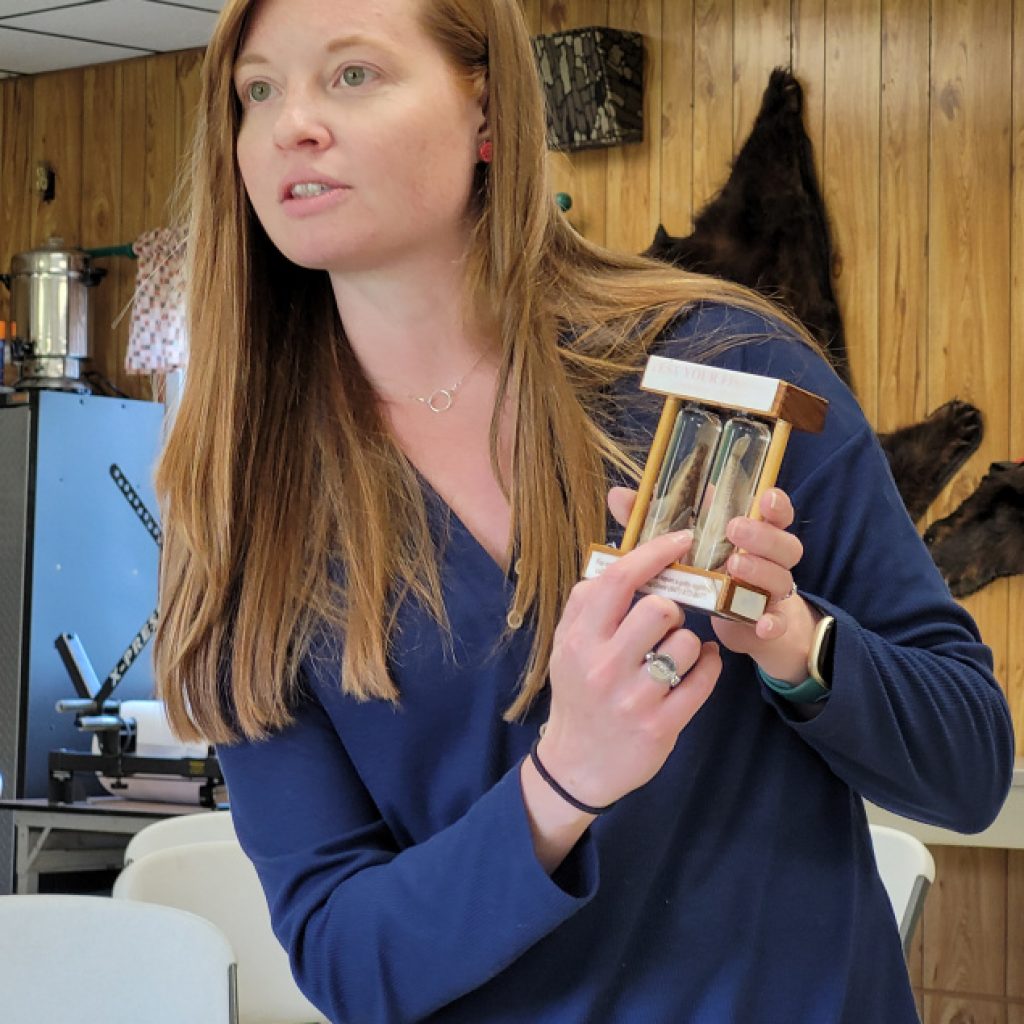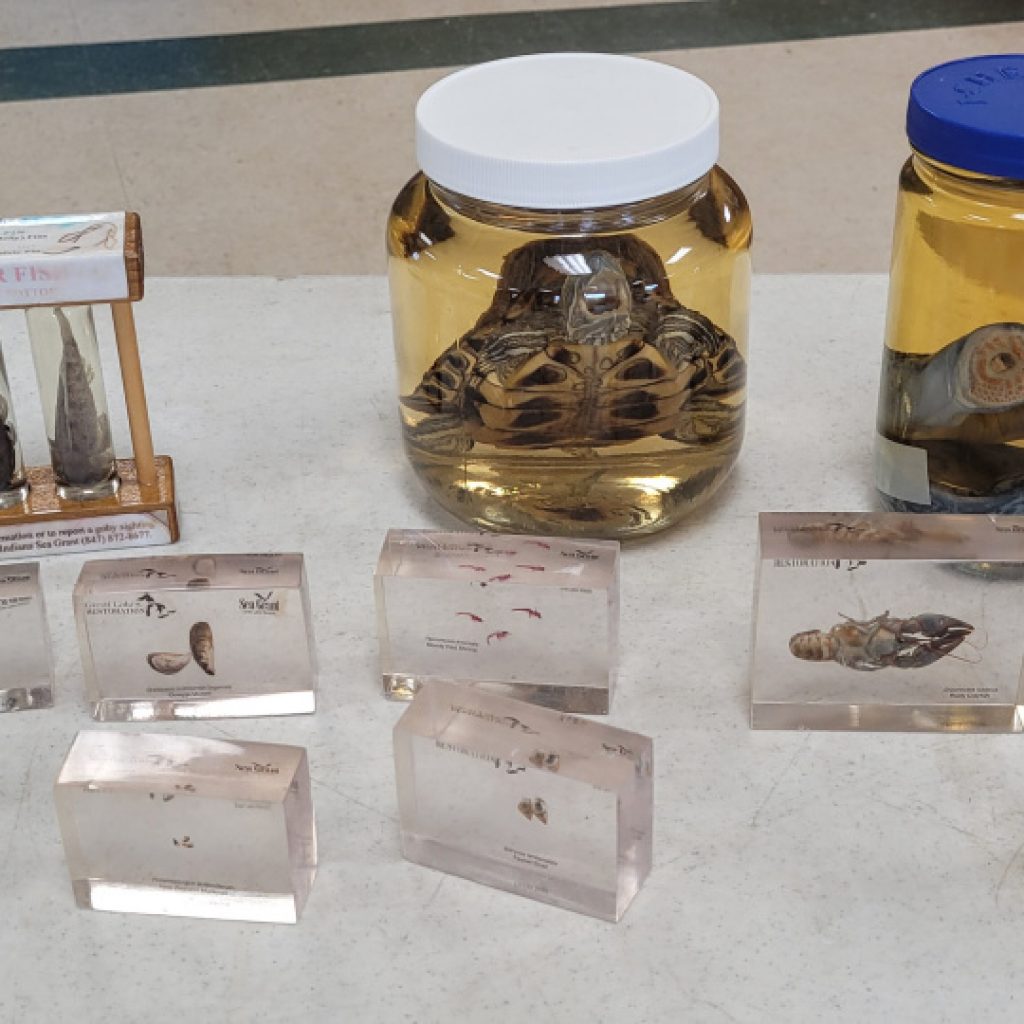NEWS & STORIES
PHWFF Erie learns about the threat of invasive species
Thanks to Gary Rihn for providing the following summary of a great educational seminar provided by PA Sea Grant to the Erie PA program.
Recently, a group of participants and volunteers of the Erie program of Project Healing Water Fly Fishing were treated to a presentation by an expert on local invasive species of particular concern to their area.
Amber Stilwell, who is a scientist with PA Sea Grant, and works as their Coastal Outreach Specialist as well as a Master Watershed Steward Coordinator, came to the Gem City Sportsmen’s Club where the PHWFF program holds their meetings and spent an hour talking to the group about what invasive species are, their impact, and how to prevent their spread.
Stilwell said that a species can be native, introduced, or invasive, along with the differences. “An invasive species has a high growth rate, no real predators, typically a high reproduction rate, and very adaptable to their environment”, she explained. As an example of high reproduction rates, she used the zebra mussel, where one female can have one million offspring per season. She also spoke about the round goby, saying that it is a generalist feeder, basically eating anything from algae particles to zooplankton to native mussel larva which impacts the food chain for other fish and aquatic animals.
Some of the impacts of of invasive species are crowding out of desirable native species, by taking away habitat and resources that they need to survive. Another often misunderstood detrimental effect takes place in the water itself. “I often hear, ‘But the zebra mussels are filtering and cleaning the lake’. What they’re doing though is removing that turbidity from the lake, allowing sunlight to penetrate deeper than ever before. This can produce toxic algae blooms that are harmful to us, and our dogs swimming in the lake, affecting our organs and our nervous system. What we’re talking about is potential change for entire ecosystems”, explained Stilwell.
Beyond these, there is a huge economic impact. In PA, fishing tourism accounts for $4.5 billion each year. If water quality in places like Lake Erie suffers, and if fishing and boating around the state suffers, invasive species could have a direct negative consequence on that number. In addition, local communities spend $5 billion dollars annually combating invasive species in the Great Lakes. PA state parks also spend $40-50,000 every year spraying herbicides in the battle against aquatic plant invasive species, which has further potentially negative consequences.
Stilwell went on to talk about what flyfishers can do to help prevent the spread of invasive species. The common mantra is “Clean Drain, Dry”. She said that draining any boat drain plugs and livewells while still at the body of water prevents moving live specimens between them. Thoroughly cleaning your boat, trailer, fishing gear, etc. by removing any vegetation, mud, should be done after any day on the water before leaving the area, then again at home with hot water. Thoroughly drying everything for a minimum of five days should be sufficient to kill any invasive species, larva or eggs that may have been missed. Stilwell mentioned that as a scientist, she often must move between multiple bodies of water in a single day while doing studies. When she does this, she has multiple pairs of waders and boots, so that she can change into clean gear between stops to prevent spread. Another source of spread is releasing pets such as turtles and dumping aquariums containing fish, plants and invertebrates.
Stilwell finished up with what she called biosecurity. She said that if you were going to be fishing two bodies of water in the same or succeeding days, where one has a known higher risk factor, that you make that your second stop to minimize the transfer risks, after cleaning as thoroughly as possible after the first stop. It’s up to everybody who fishes and boats to help prevent the spread of invasive species. If you see what you think is an invasive species, you can take a picture and report it to the PA Fish and Boat Commission, to PA Sea Grant, or to whoever is responsible for the body of water that you are on.

